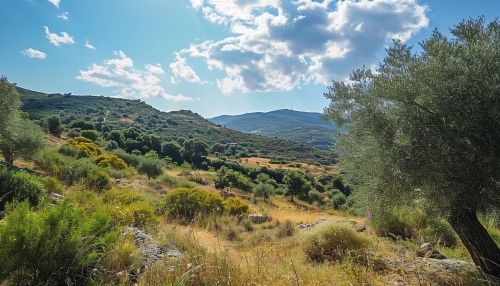Mediterranean climate
Overview
A Mediterranean climate or dry summer climate is characterized by dry summers and mild, wet winters. The climate receives its name from the Mediterranean Basin, where this type of climate is most common. Mediterranean climate zones are typically located in the western sides of continents, between roughly 30 and 45 degrees north and south of the equator.
Characteristics
The main characteristics of a Mediterranean climate are hot, dry summers and cool, wet winters. The climate is defined by the Köppen climate classification as "Csa" or "Csb", with the 's' signifying a dry summer. The 'a' and 'b' denote hot and warm summer climates respectively.


Distribution
Mediterranean climates are found between 30° and 45° latitudes north and south of the equator, typically on the western sides of the continents. Regions with this climate include the Mediterranean Basin, much of California, central Chile, parts of South Australia, sections of South Africa and sections of Western and South Australia.
Vegetation
The native vegetation of Mediterranean climate lands must be adapted to survive long, hot summer droughts. The Mediterranean forests, woodlands, and scrub biome is closely associated with Mediterranean climate zones. The vegetation is characterized by plants that are adapted to winter rainfall and summer drought. These include sclerophyll shrubs, small trees, grasses, and herbs.
Human adaptation
Human communities have adapted to Mediterranean climates for thousands of years. The fertile soils and mild climate make it ideal for agriculture, particularly fruit crops like olives, figs, citrus fruits, and grapes. The climate also supports a variety of other crops, including wheat, corn, and vegetables.
